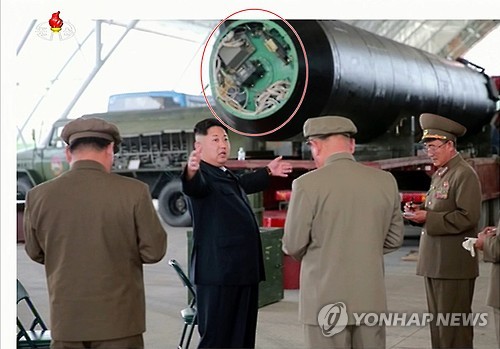A Partial Success for the Musudan: Addendum
North Korea has just released an image of Kim Jong Un posing in front of a Musudan missile (Hwasong-10) with the reentry vehicle removed. In addition to showing the grid fins in their stowed configuration, this view shows us the missile’s guidance package. The resolution is not high enough to positively identify specific components or assemblies, but it clearly isn’t the guidance system from a 1960s-vintage Russian R-27 missile. In the original Russian design, the rather bulkier guidance system was fit into a depressed cavity at the top of the propellant tank; the North Koreans have instead fit the electronics into the narrow space atop a normal tank dome. This means they have rebuilt the tank dome as well as the guidance system, though this comes as no surprise given that the missile’s propellant tanks have been stretched by almost 2.5 meters to increase its range.

Even if North Korea obtained complete R-27 missiles from Russia in the 1990s, it is unlikely they would trust 40-year-old electronics to control it. And we know that North Korea has the ability to build their own guidance systems, whether for shorter-ranged Nodong missiles or for Unha satellite launch vehicles. We know from recovered Unha wreckage that they are willing to use modern imported commercial-grade electronics in their missiles, which would explain why their guidance system is smaller than the Russian original.
What we don’t know is how well it performs. Precision components like missile-grade mechanical or laser gyroscopes are difficult to build and difficult to import without it being obvious that one is importing missile parts. Possibly the North Koreans have found a supplier that doesn’t care, or possibly their own technicians have mastered the art of building these systems. At a minimum, the Musudan is capable of completing a flight without tumbling out of control, at least some of the time, and even if it is no more precise than North Korea’s other missiles, it is still almost certainly accurate enough to hit, for example, the island of Guam. Although, hitting specific targets on Guam, like the airbase or port facilities, will likely require additional testing for calibration even if the design is sound and accurate.
For the full assessment of the June 2016 Musudan tests, see “A Partial Success for the Musudan.”
